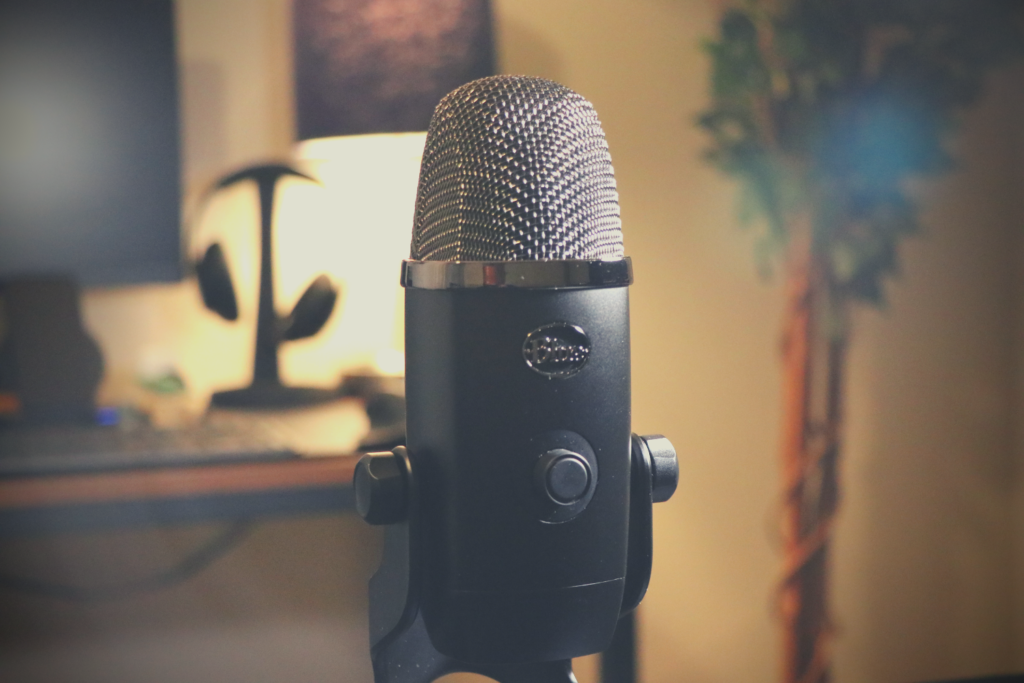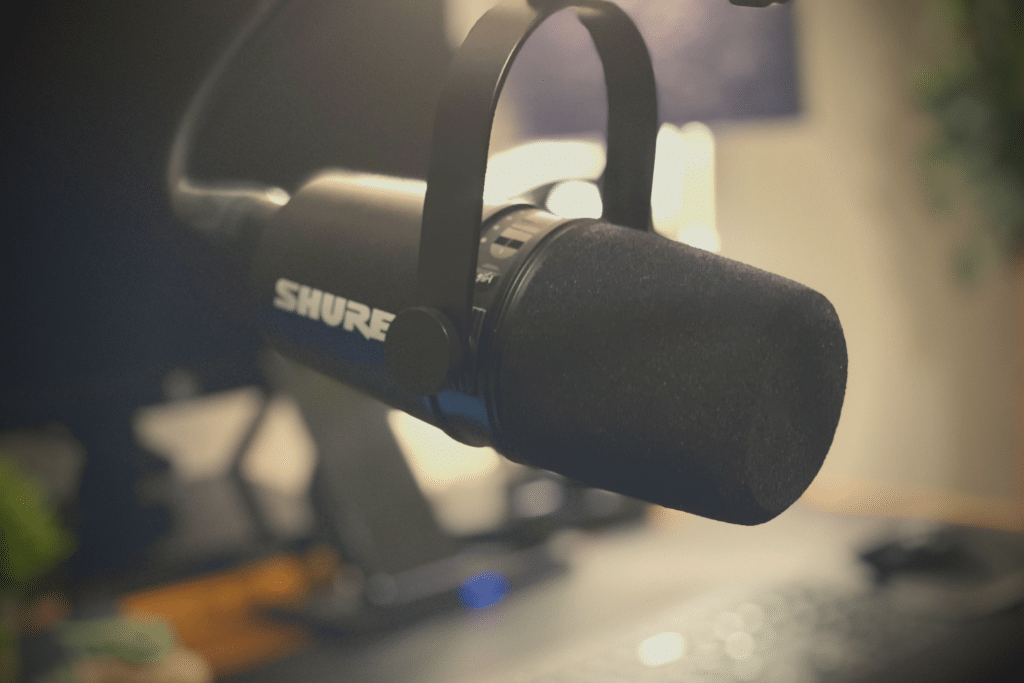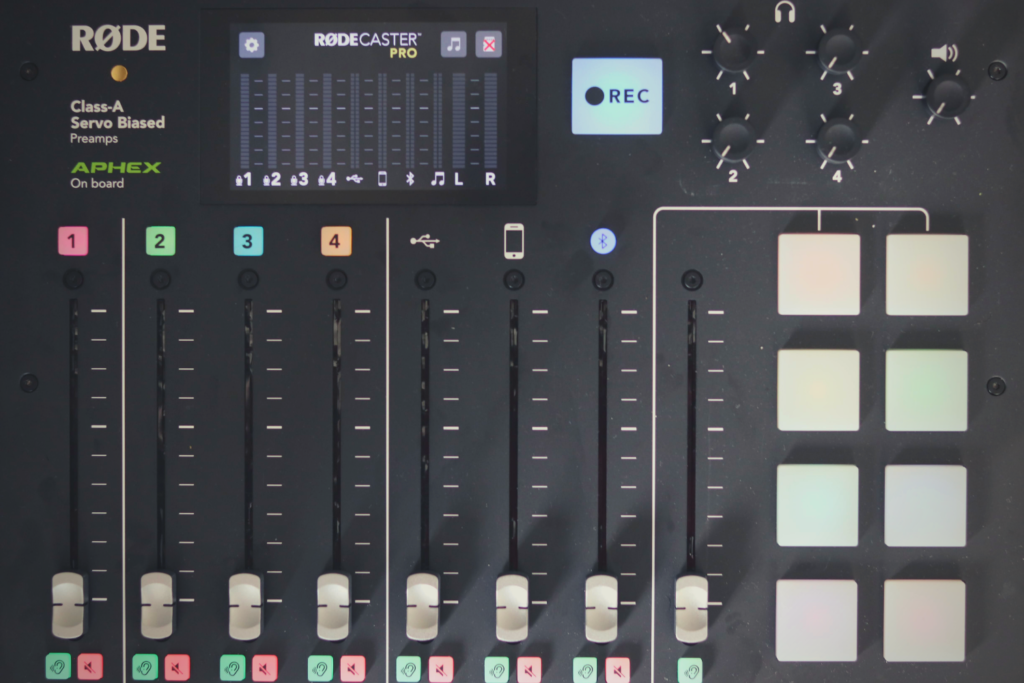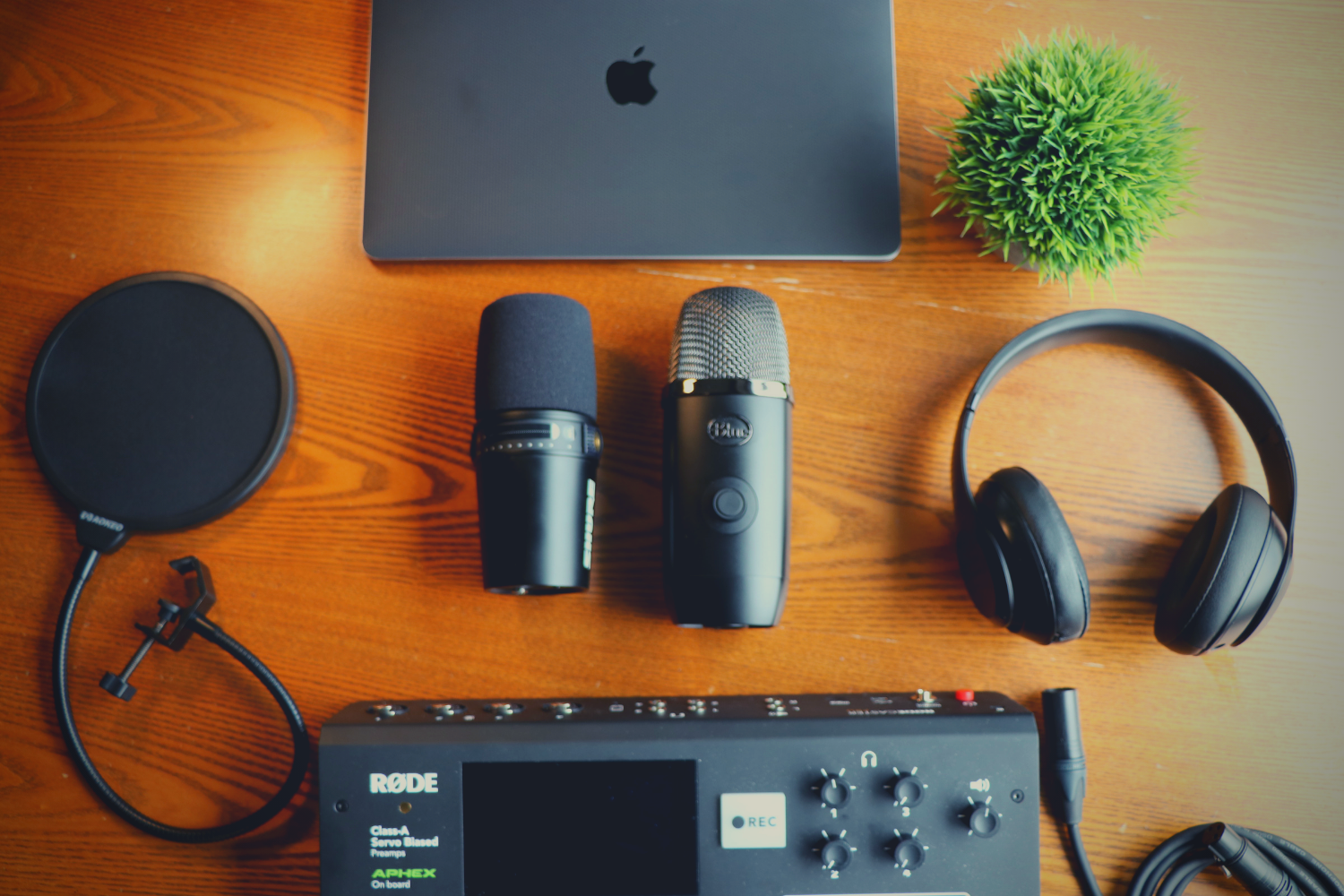The podcast equipment recommendations here are meant to help reduce the amount of time you spend researching this subject. That’s so you can focus on creating content.
All you need to do is pick your budget level and go.
I’ve put together these recommendations for individual podcasters. As always, my goal is to help ensure you’re able to deliver the highest quality sound, no matter your budget. But these items will also allow you to scale your setup if you’re thinking about growth.
So it doesn’t matter if you’re constrained by a lack of funds or if your pockets are bulging. There’s something here for you.
These podcast equipment recommendations are based on budgets of:
(Click on the links to skip ahead.)
Note: These equipment items are what I recommend to clients for my podcast development service because they’re mostly plug-and-play, they’re known for their high level of quality, or I’ve personally used or tested the item.
If you have any questions about my recommendations or need help with your setup, please reach out to me here.

$250 Budget
| Item | Current Price |
|---|---|
| Microphone: Blue Yeti X | $169.99 |
| Headphones: OneOdio closed-back headphones | $33.99 |
| Microphone foam cover: Mudder Mic Windscreen | $7.99 |
| Pop filter: Aokeo Mini | $7.99 |
| Total | $219.96 |
At this budget level, the centerpiece of your podcasting setup will be your microphone. A USB microphone, like the Blue Yeti X, will give you great sound. The accompanying software will help you enhance your sound — maybe even give you that public radio voice (if that’s something you desire). Add headphones, a mic foam cover, and a pop filter for good measure, and you’ll be able to sound like a pro without breaking the bank.
As someone who has used the Blue Yeti X for a little more than a year (mostly for video conferences), I can attest to its durability and consistent sound quality. I also know that desk vibrations and other noises easily affect it. This is not the mic you want if you’re recording in loud settings. But the Yeti X more than meets the bar for most home studios.
Alternatively, you can save some money and get the highly-rated RØDE NT-USB Mini, which is $99. Like the Blue Yeti X, it’s plug-and-play and designed to block out extraneous noises.

$500 Budget
| Item | Current Price |
|---|---|
| Microphone: Shure MV7 | $249 |
| XLR cord: Amazon Basics | $7.99 |
| Microphone boom arm: Samson MB38 | $50.39 |
| Pop filter: Aokeo Mini | $7.99 |
| Headphones: Audio Technica ATH-M20X | $49 |
| Audio interface: Focusrite Scarlett Solo | $119.99 |
| Total | $484.36 |
The Shure MV7 is a dynamic microphone with both USB and XLR output. It’s the new sibling microphone of the SM7B ($399), which is considered the gold standard in the radio industry. The MV7 manages to have a near comparable sound. However, there are some notable differences.
It’s compatible with Shure’s MOTIV Desktop software, which allows you to enhance the microphone’s sound and adjust your EQ. While the microphone sounds great out of the box, the software can improve it. The MV7 also picks up more plosives (the quick rushes of air that come from speaking words with “P” and “B” in them) than the SM7B. Podcasters should use a pop filter with this microphone or a larger foam cover.
I currently use the MV7 and can attest to its rich sound and ease of use. It is exactly the kind of microphone you want when you don’t want to edit much.
To go along with your improved microphone, I’ve included the Focusrite Scarlett Solo, an audio interface. The Scarlett Solo allows you to utilize the balanced sound of the microphone’s XLR output and manage the microphone’s levels for your recording software. This audio interface is the first step toward a more advanced podcasting setup and is a good starting point for beginners.

$1,000 Budget
| Item | Current Price |
|---|---|
| Microphone: Shure MV7 | $249 |
| XLR cord: Amazon Basics | $7.99 |
| Microphone boom arm: Samson MB38 | $50.39 |
| Pop filter: Aokeo Mini | $7.99 |
| Headphones: Audio Technica ATH-M20X | $49 |
| Audio interface: RØDECaster Pro | $599 |
| Total | $963.37 |
The centerpiece of this setup is the RØDECaster Pro (pictured above). It’s an all-in-one mixer and audio interface specially designed for podcasting.
Audio interfaces like the RØDECaster Pro allow you to record multiple people at once, record computer audio (which is good for Zoom and Skype calls), connect your phone via a TRRS cord, and connect to a device via Bluetooth. There are four XLR inputs on the RØDECaster Pro and eight specially mapped buttons to incorporate music, sound effects, or interview clips. The use cases are pretty endless, which is why it’s so popular.
I’ve been using the RØDECaster Pro for a few months now, and I love its ease of use. It simplifies the multitrack recording process. And there are tons of tutorials if you happen to get stuck. That’s why it’s at the top of my list of podcast equipment recommendations for clients.
Notes on accessories
I’ve purposely minimized the cost of some accessories here. For example, I don’t believe in spending an extraordinary amount of money on headphones. Any studio monitoring headphones that can pick up a range of 20 HZ – 20kHZ will do fine for vocals. But comfort matters. And depending on your podcasting needs, portability matters.
There is an extraordinary number of boom arms to choose from. I currently use the Blue Microphones Compass, which is $99. It’s sturdy and not terrible to look at. Many boom arms cost $100 or more. The Samson MB38 is good for its price at $50, is well-reviewed, and can hold the weight of multiple microphones.
Don’t think too hard about XLR cords and pop filters, especially with these setups. You just need to get something that will get the job done.
Summary
What’s most important is focusing on producing great content for your show. Tools like the Blue Yeti X, Shure MV7, and RØDECaster Pro help you worry less about editing your podcast and more about bringing your creativity and storytelling to life. You can find many alternatives to each of these selections, but I hope my podcast equipment recommendations help you cut down on your time searching for gear.
Related: My startup checklist for podcasting

